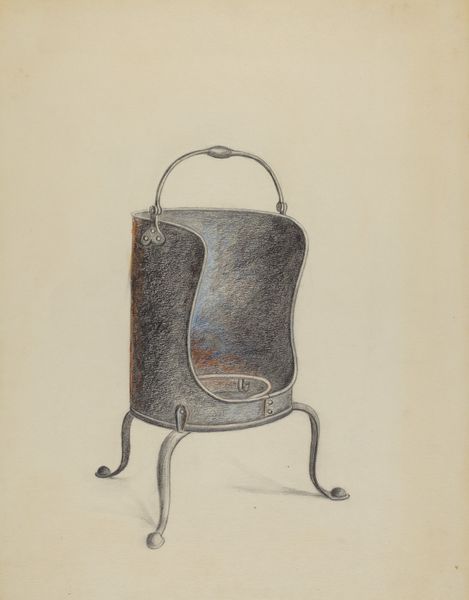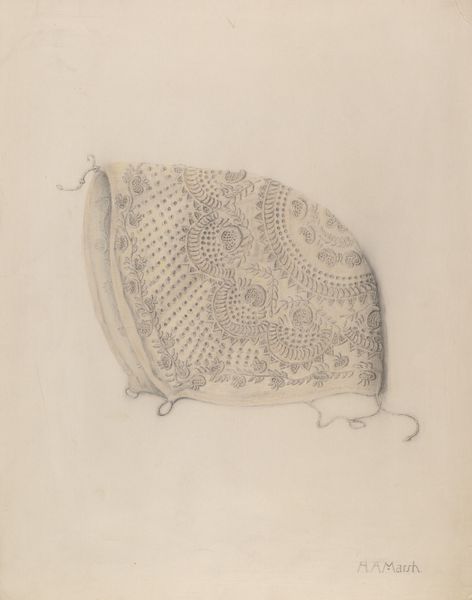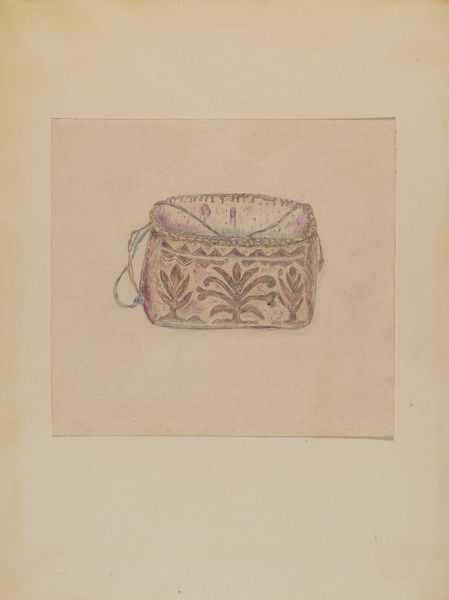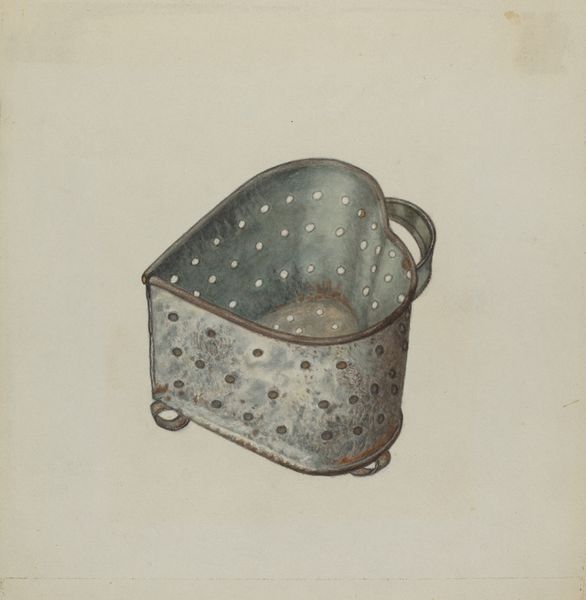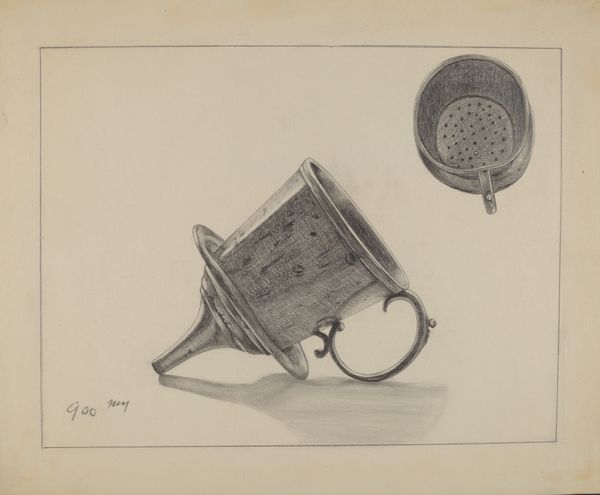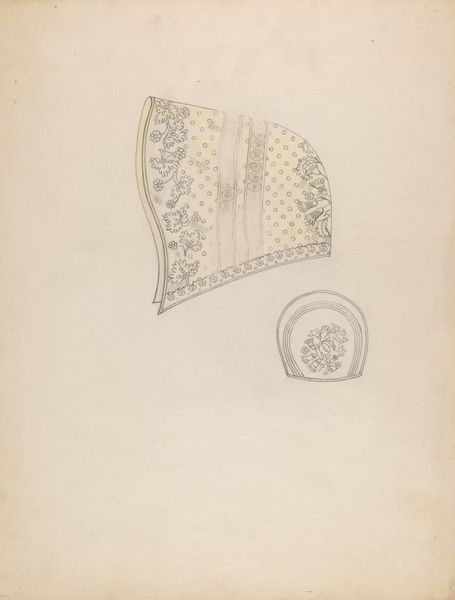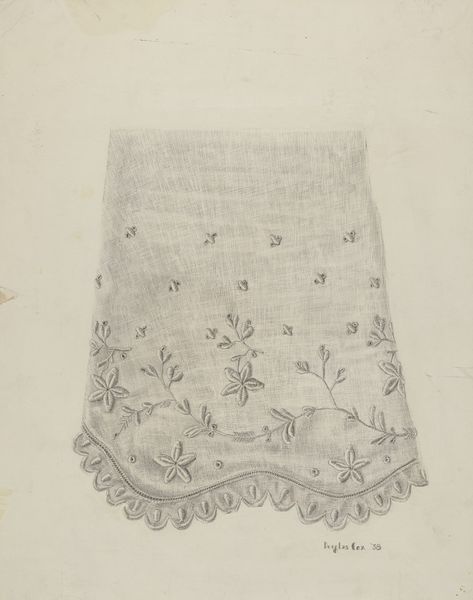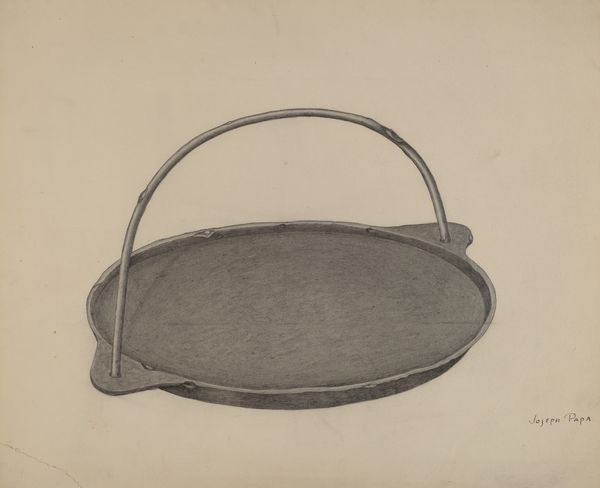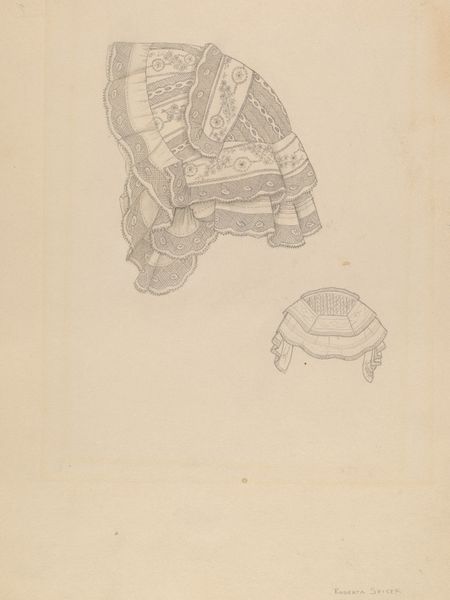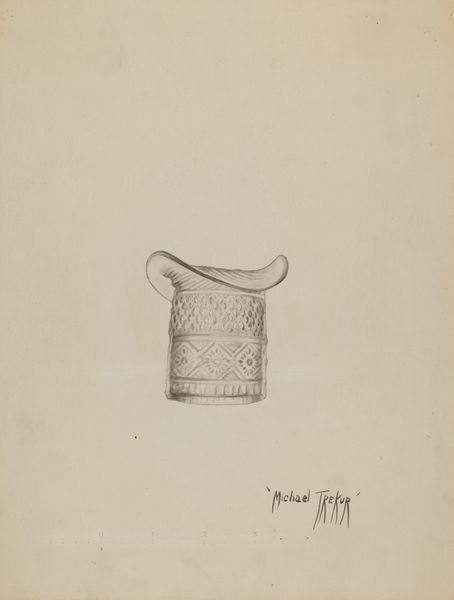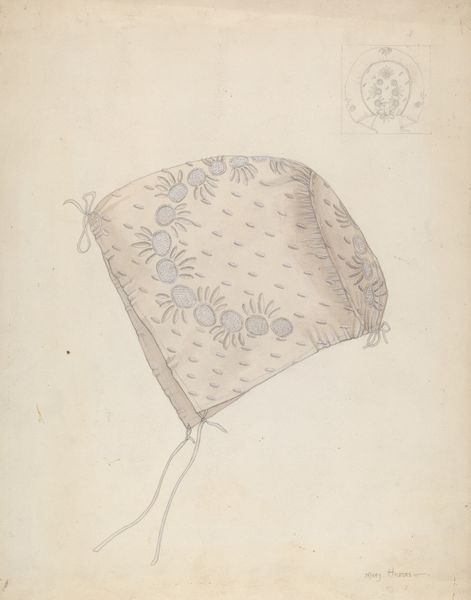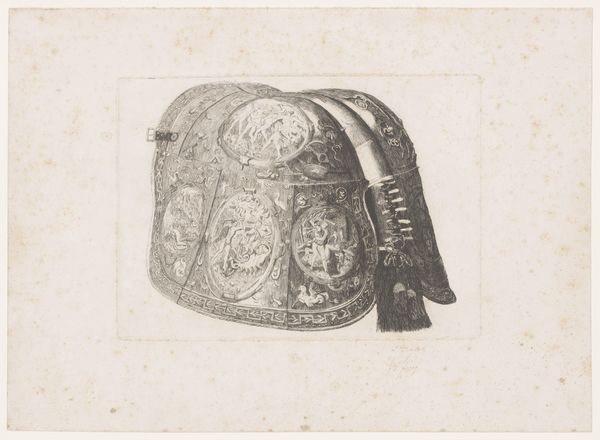
drawing, paper, pencil
#
drawing
#
paper
#
pencil
#
academic-art
#
realism
Dimensions: overall: 30.2 x 22.9 cm (11 7/8 x 9 in.)
Copyright: National Gallery of Art: CC0 1.0
Editor: This drawing from around 1938, titled "Child's Cap," is rendered with pencil on paper by Raymond Guterl. There's such intricate detail in what feels like a very unassuming object. How should we be looking at something so personal and simple? Curator: Let’s think about what a hand-drawn rendering of a manufactured object from the late 1930s might signify. It highlights the relationship between handmade artistry and the emerging mass production of textiles, right? This isn't just a cute baby's bonnet. It's a record of a moment when traditional skills and factory production started to collide, and consumers gained new access to decorative material. Editor: That makes me reconsider my idea that it’s ‘simple’... I see how it points towards changes in production. Curator: Exactly! We must remember that the Industrial Revolution significantly changed labor practices. Consider the unseen labor involved in the manufacture and distribution of this very cap. This drawing serves as a quiet testament to a shift in the social meaning of handmade items. Editor: So, its value isn't just in the aesthetic qualities of the drawing itself, but in the story of how clothing and textiles were evolving during this time. Curator: Precisely. Guterl meticulously renders the details. But is he celebrating, lamenting, or simply documenting this shift in textile production and consumption? Where does this drawing fit within the broader context of art made during the depression era, concerning craftsmanship and societal change? These are important questions. Editor: Wow, I wouldn't have thought of that, focusing on it as a document of labor and consumption. Thank you for widening my perspective. Curator: Absolutely. Remember, objects, especially mundane ones, often hold powerful social and historical meanings that get overlooked if we only focus on traditional aesthetic considerations.
Comments
No comments
Be the first to comment and join the conversation on the ultimate creative platform.
